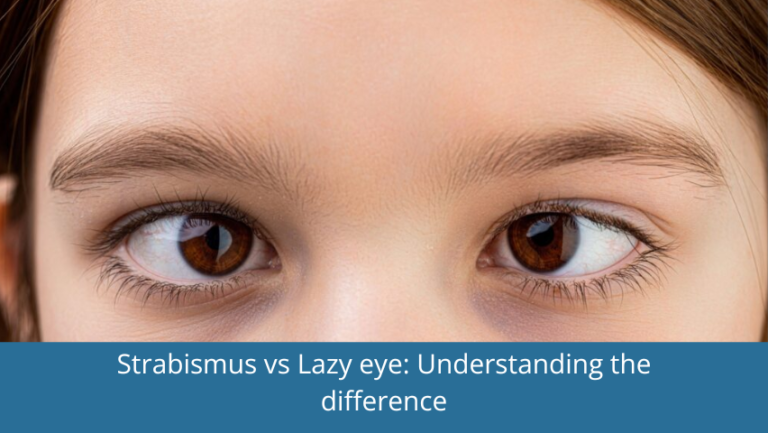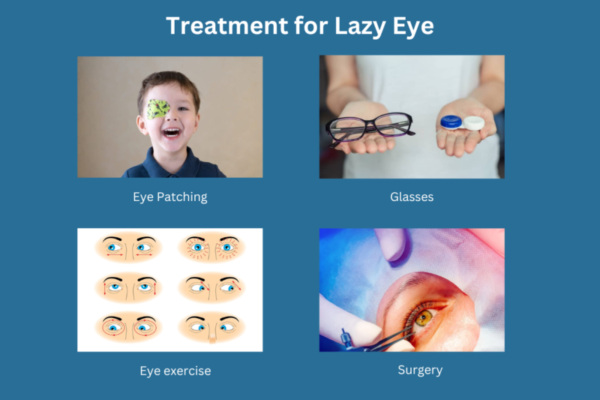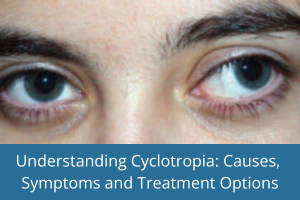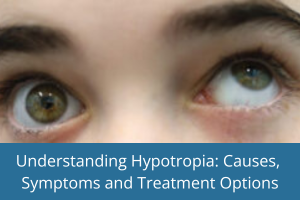Table of Contents
ToggleStrabismus vs Lazy eye: Understanding the difference

When it comes to vision health, two common conditions that often get confused are strabismus and lazy eye. Both conditions affect how the eyes work together, but they are different in terms of causes, symptoms, and treatment. In this blog, we will explore the differences between strabismus and lazy eye, helping you better understand these conditions and how they can be treated.
What is Strabismus?
Strabismus, also known as crossed eyes or eye misalignment, is a condition where the eyes do not align properly. One eye may turn inwards, outwards, upwards, or downwards while the other eye focuses straight ahead. Strabismus can affect one or both eyes, and it can occur constantly or intermittently.
Symptoms of Strabismus:
- One or both eyes appear misaligned.
- Double vision (diplopia).
- Difficulty with depth perception.
- Squinting or closing one eye in bright light.
- Trouble with reading or focusing on objects.
Causes of Strabismus:
- Muscle imbalance: Strabismus is caused by an imbalance in the eye muscles that control eye movement. These muscles may not work together as they should, resulting in misalignment.
- Nerve issues: Sometimes, the nerves that control the eye muscles may not function properly, leading to strabismus.
- Genetic factors: In some cases, strabismus can run in families.
- Health conditions: Conditions like cerebral palsy, Down syndrome, or neurological disorders may contribute to strabismus.
What is Lazy Eye (Amblyopia)?
Amblyopia, commonly known as lazy eye, is a vision development disorder in which one eye has poor vision compared to the other. Unlike strabismus, which involves eye misalignment, lazy eye typically occurs when the brain favours one eye over the other, causing the weaker eye to become underdeveloped.
Symptoms of lazy eye:
- Reduced vision in one eye, despite wearing glasses or contact lenses.
- Difficulty with tasks requiring good vision, like reading or seeing fine details.
- Squinting or tilting the head to compensate for poor vision.
- A noticeable difference in the strength of vision between the two eyes.
Causes of lazy eye:
- Strabismus: Strabismus is one of the leading causes of lazy eye, especially when the brain ignores the signals from the misaligned eye.
- Refractive errors: Significant differences in refractive errors (e.g., one eye is far-sighted and the other is near-sighted) can lead to amblyopia.
- Cataracts or other vision problems: Any condition that reduces the vision in one eye, such as cataracts or clouding of the eye’s lens, can lead to lazy eye.
- Blocked vision during early childhood: Conditions like ptosis (droopy eyelids) or other issues that obstruct the view of the eye during early childhood can contribute to lazy eye development.
Key differences between strabismus and Lazy eye
Aspect | Strabismus | Lazy Eye (Amblyopia) |
Definition | A condition where the eyes are misaligned. | A vision impairment in one eye caused by the brain ignoring signals from that eye. |
Eye Alignment | The eyes may not align properly, causing one or both eyes to turn in different directions. | The eye alignment is often normal, but the brain favours one eye over the other. |
Cause | Often caused by muscle imbalances or nerve issues affecting eye movement. | Occurs when the brain favours one eye, leading to the underdevelopment of the other eye’s vision. |
Vision Impact | May cause double vision, poor depth perception, or difficulty with eye coordination. | One eye has weaker vision compared to the other, despite the eye being structurally normal. |
Treatment | Treatment options may include glasses, eye exercises, or in some cases, surgery to realign the eyes. | Treatments often involve patching the stronger eye, glasses, or vision therapy to improve the weaker eye’s vision. |
Can strabismus lead to Lazy Eye?
Yes, strabismus can lead to lazy eyes, especially in children. If strabismus is not treated early, the brain may start to ignore the misaligned eye, leading to amblyopia. This is why it is essential to address strabismus promptly to avoid long-term vision problems.
Treatment for strabismus and Lazy eye
Both strabismus and lazy eye can be treated effectively, especially if detected early.
Treatment for strabismus:
- Glasses: Correcting refractive errors can help improve alignment in some cases.
- Eye exercises: Vision therapy can help strengthen the eye muscles and improve coordination between the eyes.
- Surgery: In cases where other treatments do not work, surgery may be needed to adjust the eye muscles and correct misalignment.
Treatment for Lazy Eye:

- Patching: One of the most common treatments for lazy eye involves patching the stronger eye to encourage the weaker eye to work harder.
- Glasses: Correcting refractive errors can help improve vision in the affected eye.
- Vision therapy: Eye exercises and therapies designed to improve coordination between the eyes can help treat amblyopia.
- Surgery: In some cases, surgery may be necessary to treat any underlying causes like cataracts or eyelid drooping.
When to seek treatment?
If you or your child exhibits any signs of strabismus or lazy eye, it is important to seek treatment as soon as possible. Early intervention can prevent long-term vision problems and improve the chances of successful treatment. Regular eye exams, especially for young children, are essential in detecting these conditions early.
Conclusion
While strabismus and lazy eye are often confused, they are distinct conditions that affect eye alignment and vision in different ways. Strabismus involves misalignment of the eyes, while lazy eye results from the brain ignoring signals from the weaker eye. Both conditions can be treated effectively with the right interventions. If you notice symptoms of either condition, do not hesitate to consult an eye specialist at Clarity Eye Surgeons for a thorough examination and appropriate treatment.
Author bio
Dr Parth Shah is a director and principal ophthalmologist at Clarity Eye Surgeons in Canberra, specialising in strabismus and lazy eye. With extensive training and experience, he is renowned for his expertise in the field. Dr Shah is dedicated not only to performing successful surgeries but also to patient education. His compassionate approach, combined with technical proficiency, has earned him the trust and gratitude of countless patients. He is a true advocate for eye health and a trusted name in the Canberra ophthalmology community.
FAQs
The effectiveness of amblyopia treatment declines rapidly with age. It is much easier to treat children. There is no strong evidence for treatment of amblyopia (lazy eye) in adults.
Strabismus is best treated early, preferably before the age of 6 years, to avoid complications like lazy eye. However, treatment can still be effective at older ages with appropriate intervention.
In rare cases, strabismus may improve on its own, but professional treatment is often necessary to ensure proper eye alignment and prevent further issues like double vision.
Symptoms include one or both eyes appearing misaligned, squinting, difficulty focusing, and frequent turning of the head to see better. If you notice any of these signs, it is important to consult an eye specialist.
Yes, strabismus can run in families. If a family member has a history of the condition, there may be a higher likelihood of it occurring in future generations.
The success rate of strabismus surgery is generally high, especially if performed by an experienced surgeon. However, some cases may require follow-up surgeries or other treatments.
If left untreated, a lazy eye can lead to permanent vision loss in the weaker eye and may significantly affect depth perception and overall visual acuity.
Glasses are often used to correct refractive errors in both lazy and healthy eyes, improving overall vision and allowing the brain to use both eyes properly.
Other blogs related to Strabismus

The impact of strabismus on academic performance in children
The impact of strabismus on academic performance in children Strabismus, commonly known as crossed eyes, is a condition where the eyes are misaligned and do

Strabismus surgery and its impact on binocular vision
Strabismus surgery and its impact on binocular vision Strabismus, commonly known as “crossed eyes” or “eye misalignment,” is a condition where the eyes do not

Strabismus vs Lazy eye: Understanding the difference
Strabismus vs Lazy eye: Understanding the difference When it comes to vision health, two common conditions that often get confused are strabismus and lazy eye.

What to expect before, during and after strabismus surgery?
What to expect before, during and after strabismus surgery? Strabismus, commonly referred to as crossed eyes, occurs when the eyes do not align properly. This

Strabismus surgery: The role of customised surgical plans for optimal outcomes.
Strabismus surgery: The role of customised surgical plans for optimal outcomes Strabismus, commonly known as crossed eyes or squint, is a condition where the eyes

Understanding Cyclotropia: Causes,
Symptoms and Treatment Options
Understanding Cyclotropia: Causes, Symptoms and Treatment Options What is Cyclotropia? Cyclotropia, also known as “torsional strabismus” or “cyclodeviation”, is a condition characterised by the misalignment

Understanding Hypotropia: Causes,
Symptoms and Treatment Options
Understanding Hypotropia: Causes, Symptoms and Treatment Options What is Hypotropia? Hypotropia is a form of strabismus, commonly known as “lazy eye” or “squint”, where one

Understanding Hypertropia: Causes, Symptoms, and Treatment Options
Understanding Hypertropia: Causes, Symptoms, and Treatment Options What is Hypertropia? Hypertropia, a form of strabismus, is a condition characterised by the upward deviation of one

Understanding Exotropia: Causes, Symptoms, and Treatment Options
Understanding Exotropia: Causes, Symptoms, and Treatment Options What is Exotropia? Exotropia is a form of strabismus (eye misalignment) characterised by the outward turning of one

Esotropia: Causes, Symptoms, and Treatment
Understanding Esotropia: Symptoms, Causes, and Treatment Options What is Esotropia? Esotropia is a type of strabismus, a condition characterised by the misalignment of the eyes.

Understanding Strabismus in Adults: Causes, Diagnosis & Treatment
Understanding Strabismus in Adults: Causes, Diagnosis & Treatment Welcome to Clarity Eye Surgeons in Canberra, where we are dedicated to optimising your eye health. Today,

Understanding Strabismus in Children: Causes, Treatment, and What Parents Need to Know
Understanding Strabismus in Children: Causes, Diagnosis & Treatment Dr Parth Shah is the principal ophthalmologist at Clarity Eye Surgeons in Canberra. He understands that when

Advanced Techniques in Strabismus Surgery: A Comprehensive Guide
Advanced Techniques in Strabismus Surgery: A Comprehensive Guide Introduction Strabismus, commonly known as squint or crossed eyes, is a condition that affects the alignment of
